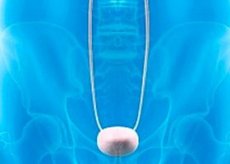Medical expert of the article
New publications
Vesicoureteral reflux - Information overview
Last reviewed: 04.07.2025

All iLive content is medically reviewed or fact checked to ensure as much factual accuracy as possible.
We have strict sourcing guidelines and only link to reputable media sites, academic research institutions and, whenever possible, medically peer reviewed studies. Note that the numbers in parentheses ([1], [2], etc.) are clickable links to these studies.
If you feel that any of our content is inaccurate, out-of-date, or otherwise questionable, please select it and press Ctrl + Enter.

Epidemiology
The prevalence of the disease in the pediatric population is 1-2%. Among children with urinary tract infection, vesicoureteral reflux is detected in 50-70% of patients. In the first year of life, the ratio of boys and girls suffering from this disease is 6:1, and by primary school age, this ratio changes in favor of girls.
At the same time, many authors share the point of view that the true figures of occurrence in the population remain undiagnosed and underestimated due to the invasiveness of diagnostic measures. Figures of frequency close to the true ones can be obtained by identifying the asymptomatic primary form in siblings suffering from vesicoureteral reflux. Thus, the prevalence of the primary form of the disease among siblings in a number of studies fluctuates from 4.7 to 50%. According to modern data, the generation of children whose parents suffered from vesicoureteral reflux has a risk of developing this disease of 70%. A higher incidence of the disease is noted in the white race. A unilateral process is observed in 50-60%, bilateral - in 40-50% of observations.
Causes vesicoureteral reflux.
Vesicoureteral reflux is a polyetiological disease.
The main cause of the primary form of the disease is a congenital malformation of the ureteral orifice:
- persistent gaping of the orifice (“funnel-shaped” configuration of the ureteral orifice);
- location of the ureteral orifice outside the Lieto triangle (dystopia of the ureteral orifice);
- short submucous tunnel of the intravesical part of the ureter;
- duplication of the ureter;
- paraureteral diverticulum.
 [ 10 ]
[ 10 ]
Symptoms vesicoureteral reflux.
Characteristic symptoms of vesicoureteral reflux are absent. The revealed urinary infection, pyelonephritis, arterial hypertension, renal failure in many cases are complications of vesicoureteral reflux. Clinical signs of these complications should alert the clinician: it is necessary to find out the reason for their occurrence.
The most common symptoms are pain that occurs during or immediately after urination. In young children, the pain is usually localized in the abdomen, in older patients - in the lumbar region.
Diagnostics vesicoureteral reflux.
The recent increase in the number of patients diagnosed with this pathology is associated with the rapid introduction of new diagnostic methods: antenatal ultrasound, complex urodynamic studies, radioisotope methods for assessing kidney function and endoscopy.
The staged approach allows objectively, from a unified pathogenetic position, to determine the indications for surgical and conservative treatment and to evaluate its results. Examination of a patient for vesicoureteral reflux (or with suspicion of it) should include the following stages.
How to examine?
What tests are needed?
Who to contact?
Treatment vesicoureteral reflux.
Modern treatment of vesicoureteral reflux includes a set of measures (therapeutic and surgical) aimed at eliminating the cause of the pathology and eliminating its consequences. The choice of the method of correction of the disease is certainly determined by its cause and form.
If the cause of the pathology development was an inflammatory process in the urinary bladder, then most often (this primarily concerns girls) minor renal dysfunction and vesicoureteral reflux of I-II degree are detected in patients. In this case, with the help of cystoscopy, characteristic signs of chronic cystitis are detected in patients, the mouth is located in the usual place and has a slit-like or conical shape according to Lyon. It is necessary to evaluate the effectiveness of the conservative treatment previously carried out by the patient: in case of irregular use of drugs or the absence of complex pathogenetic treatment, conservative therapy is prescribed.

